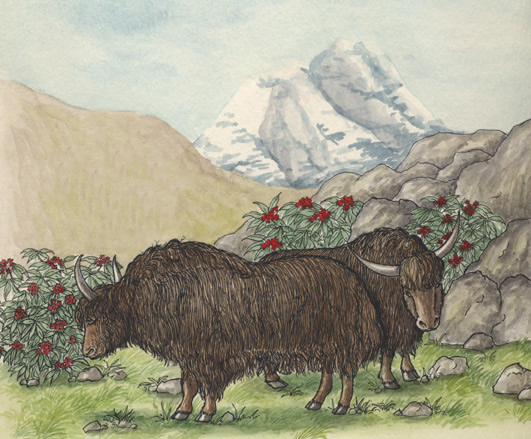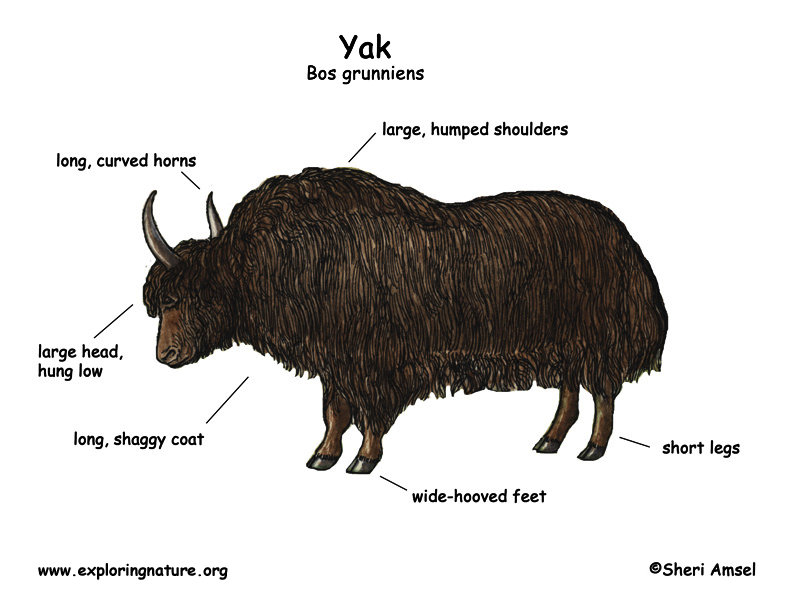

They are found on the Tibetan plateau, in Mongolia and throughout the Himalayas in Asia.
They live in high altitude (up to 18,000 feet) grassy areas, treeless, mountainous regions and dry steppes.
They are large animals, the males reaching more than a ton (2,200 pounds or 1,000 kg). Males are 3 times the size of females. They have large, humped shoulders, short legs and tend to hang their large heads. The curved horns on the males can reach more than 3 feet long. They are smaller on females. Their long, shaggy coats almost reach the ground and are thick enough to keep them warm in the frigid temperatures of the Tibetan plateau. Their feet have wide hooves for walking in deep snow.
Males usually live alone, while females will form herds. They will travel a long way in search of food.
They eat grass, moss and lichens (herbivores).
They can fall prey to wolves or snow leopards.
Females are pregnant for 9 months (gestation) and have 1 calf. They only breed every other year. Males compete for access to the females.
They can live for 25 years in the wild. They are listed as vulnerable on the CITES List (International List) and endangered on the U.S. Federal Endangered Species List.
Kingdom: Animalia
Phylum: Chordata
Subphylum: Vertebrata
Class: Mammalia
Order: Artiodactyla
Family: Bovidae
Subfamily: Bovinae
Genus: Bos
Species: Bos grunniens
When you research information you must cite the reference. Citing for websites is different from citing from books, magazines and periodicals. The style of citing shown here is from the MLA Style Citations (Modern Language Association).
When citing a WEBSITE the general format is as follows.
Author Last Name, First Name(s). "Title: Subtitle of Part of Web Page, if appropriate." Title: Subtitle: Section of Page if appropriate. Sponsoring/Publishing Agency, If Given. Additional significant descriptive information. Date of Electronic Publication or other Date, such as Last Updated. Day Month Year of access < URL >.
Amsel, Sheri. "Yak" Exploring Nature Educational Resource ©2005-2024. December 13, 2024
< http://www.exploringnature.org/db/view/Yak >

